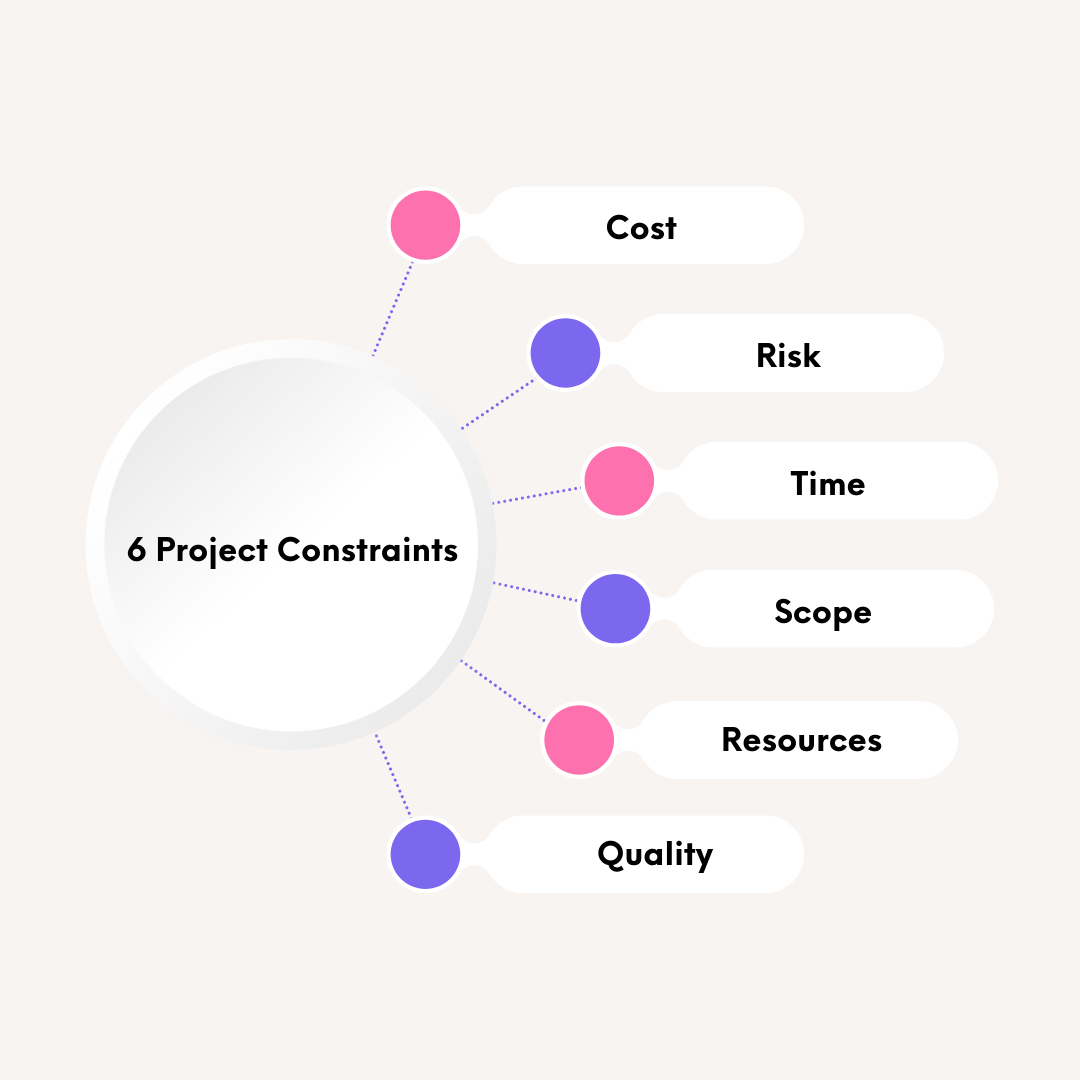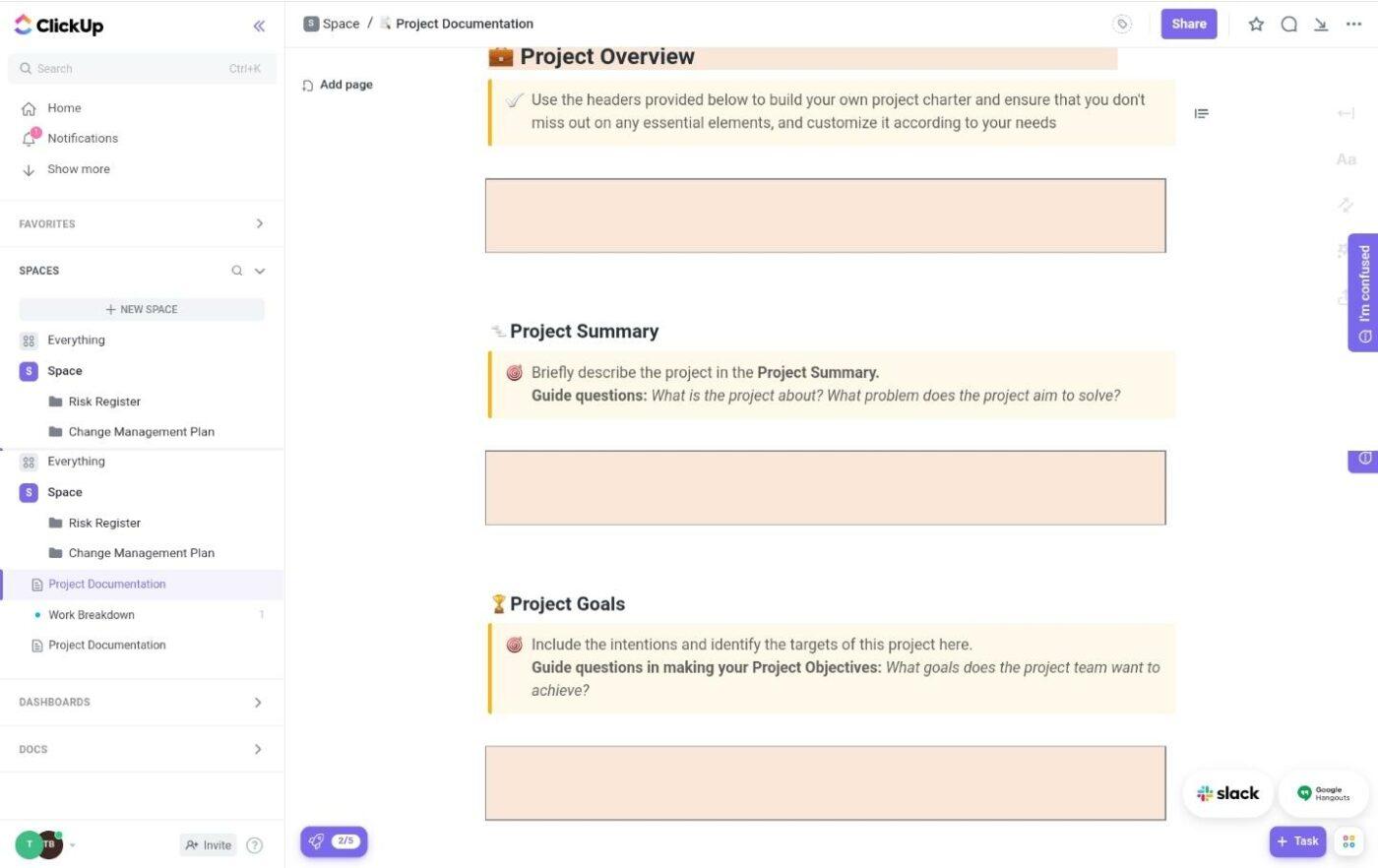تجاوز الميزانية هو وباء. وغالبًا ما يترافق مع التأخر في تسليم المشروع. وهذه مجتمعة هي علامات على فشل المشروع.
للأسف، فقط 43% من المشاريع في مأمن من هذا الوباء. أتساءل لماذا؟ السبب هو أن معظم المشاريع تفتقر إلى ضوابط فعالة وراسخة في المشروع.
لحسن الحظ، التحكم في المشروع ليس علمًا صاروخيًا. لذا استمر في القراءة لأن هذه المقالة ترشدك إلى ما يدور حوله كل شيء والأفكار القابلة للتنفيذ!
ما هي ضوابط المشروع؟
ضوابط المشروع هي أنظمة وعمليات تُستخدم لإدارة نطاق المشروع والتكلفة والجدول الزمني والجودة والموارد والمخاطر. توفر هذه الأدوات الأساس لإدارة المشروع بكفاءة وتدعم عملية اتخاذ القرار طوال دورة حياة المشروع.
يمكن أن يساعد استخدام عمليات التحكم في المشروع في ضمان بقاء المشاريع على المسار الصحيح من خلال تحديد المشكلات المحتملة في وقت مبكر واتخاذ الإجراءات التصحيحية عند الضرورة. كما تسمح للمديرين بقياس الأداء مقابل الأهداف المحددة واتخاذ الإجراءات التصحيحية بسرعة عند الحاجة.
ضوابط المشروع مقابل إدارة المشروع: ما الفرق بينهما؟
غالبًا ما يُفترض أن ضوابط المشروع وإدارة المشروع تعني نفس الشيء وتحدد عناصر المشروع المتشابهة، وهذا ليس هو الحال قبل أي شيء آخر، دعنا نوضح ذلك. إدارة المشروع هي مجموعة من المعارف والمهارات والتقنيات اللازمة لتنفيذ مشروع ما بنجاح. وهي تدير ستة أمور أساسية قيود المشروع كما هو موضح أدناه.

قيود المشروع
من ناحية أخرى، تعتبر ضوابط المشروع مجموعة فرعية من إدارة المشروع التي تشرف على اثنين من هذه القيود: تكاليف المشروع والوقت. في جوهرها، تعد ضوابط المشروع جزءًا من إدارة المشروع التي تساعد في تحليل بيانات المشروع وتحسينها لضمان تسليم المشروع في الوقت المحدد وضمن الميزانية المحددة.
وببساطة، يقوم مراقب المشروع بتقديم المشورة للمدير بشأن القضايا المتعلقة بالوقت والجداول الزمنية. ثم يقرر المدير ما إذا كان سينفذ هذه الاقتراحات أم لا.
فكّر في مدير المشروع على أنه قبطان السفينة ومراقب المشروع كضابط الملاحة الذي يخبرنا بمدى بُعد أو قرب السفينة من وجهتها النهائية. ويقترح هذا الدور أيضًا أسرع طريق إلى الوجهة ويترك الأمر للقبطان إما أن يتبع اقتراحه أو يهمله.
أهمية ضوابط المشروع في إدارة المشروع
تضمن ضوابط المشروع بقاء كل شيء على المسار الصحيح وضمن نطاق المشروع من الأولي تخطيط المشروع مرحلة إغلاق المشروع
باعتبارها العمود الفقري لإدارة المشروع، تساعد ضوابط المشروع في وضع خطة المشروع. في خطة المشروع، تكون الضوابط مسؤولة عن اقتراح الجداول الزمنية المثلى وتخطيط النفقات, تخصيص الموارد إلخ.

قم بتعيين مهام متكررة لتبسيط عملك من خلال اختيار جدول اجتماعاتك ومعاينته في تقويمك في ClickUp
مع انتقال المشروع إلى مرحلة التنفيذ، تقوم عناصر التحكم في المشروع بإبلاغ مدير المشروع عن كيفية سير المشروع فيما يتعلق باستخدام ميزانيته والتسليم في الوقت المحدد. يساعد ذلك في إنشاء وتتبع مؤشرات الأداء الرئيسية المتعلقة بالتكلفة والجدول الزمني.
كما أن ضوابط المشروع تتنبأ أيضًا بوجهة المشروع من حيث الميزانية والوقت. وإذا كان هناك ربما انحراف، فإنه يكتشف هذه المشكلات ويقترح طرقًا عملية للتعافي منها.
مع ضوابط المشروع، لديك أيضًا فرصة أفضل للتخلص من تجاوزات التكلفة من دورة حياة مشروعك. تقرير من PWC أن الافتقار إلى الضوابط المناسبة للمشروع هو أحد الأسباب الرئيسية لتجاوز التكاليف.
ومع ذلك، دعونا نلقي نظرة سريعة على بعض العوامل التي تؤثر على ضوابط المشروع.
## 4 عوامل تؤثر على ضوابط المشروع
فيما يلي أربعة عوامل يمكن أن تؤثر على ضوابط مشروعك.
1. نطاق المشروع
الـ نطاق المشروع هو مستند تشير إلى كل ما هو ضروري لنجاح المشروع. تحدد الوثيقة أصحاب المصلحة في المشروع, تسوية الموارد المواعيد النهائية التسليمات والقيود ذات الصلة بالمشروع.
إليك مثال على ذلك

استخدام مستندات ClickUp Docs لتوثيق نطاق المشروع والتفاصيل المهمة الأخرى حول مشروعك، ومشاركتها بسهولة مع فريقك
على سبيل المثال، إذا كان مشروعك هو إنشاء بطاقة عمل رقمية، فيجب عليك تحديد البرنامج والمهارات, الجدول الزمني والمتغيرات الأخرى المتضمنة. سيشكل هذا نطاق المشروع .
عدم وجود أ نطاق المشروع المحدد وأهداف الميزانية
عندما تتخذ تدابير استباقية لتحديد هذه المخاطر في مراقبة المشروع وإعداد استراتيجيات فعالة لإدارة المخاطر، يمكنك منعها أو إدارتها بفعالية لضمان الاستقرار على جميع الجبهات.
اقرأ أيضًا:_ قوالب نطاق المشروع هو مدير عمليات الأعمال في تارا للذكاء الاصطناعي. تارا هي عبارة عن منصة لتقديم المنتجات مصممة لمساعدة الفرق الهندسية على اكتساب رؤى تطويرية، تحسين الأداء ، والتسليم مع إمكانية التنبؤ
